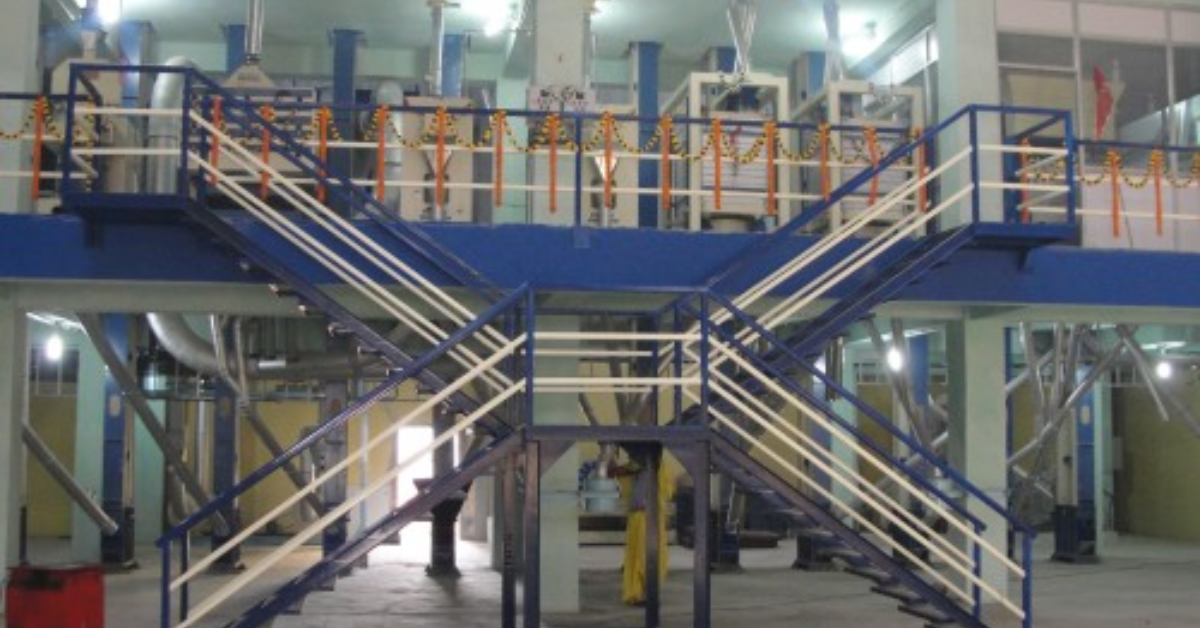Automatic Rice Mill: Revolutionizing Rice Processing for Higher Efficiency and Quality
Rice is one of the most important staple foods in the world, providing nourishment to billions of people every day. As the demand for rice continues to grow, the need for efficient and high-quality rice processing has become more crucial than ever. This is where automatic rice mills come into play. Automatic Rice Mill have revolutionized the rice processing industry by offering improved efficiency, better yield, and enhanced rice quality. Unlike traditional manual or semi-automatic methods, automatic rice mills are designed to handle the entire milling process with minimal human intervention, ensuring consistent results and reducing waste.
What is an Automatic Rice Mill?
An automatic rice mill is a modern rice processing facility equipped with advanced machinery and automation systems. It performs multiple stages of rice processing, including cleaning, husking, milling, polishing, grading, and packaging — all in a single continuous process. The automation technology integrated into these mills ensures precision and uniformity, leading to higher productivity and improved rice quality.
Traditional rice mills require significant labor input, and the milling process is often inconsistent, leading to a high percentage of broken grains and lower yield. In contrast, automatic rice mills use computer-controlled systems and automated machinery to optimize each step of the process, minimizing human error and improving efficiency.
How an Automatic Rice Mill Works
An automatic rice mill follows a systematic and automated process to convert paddy into polished rice. Here’s how the process typically works:
1. Cleaning
The first step in the milling process is cleaning the paddy. The rice mill uses automatic cleaning machines to remove impurities such as dirt, stones, straw, and other foreign materials. This step is essential to prevent damage to the milling machinery and improve the quality of the final product.
2. Husking
After cleaning, the paddy is sent to the husker, where the outer husk or shell is removed. Automatic husking machines use rubber rollers or other specialized mechanisms to separate the husk from the rice grain without damaging the kernel.
3. Whitening and Polishing
The dehusked rice, also known as brown rice, is then passed through whitening and polishing machines. These machines remove the bran layer and polish the rice grains, giving them a smooth and shiny appearance. Automatic polishing ensures consistent grain quality and enhances the visual appeal of the rice.
4. Grading and Sorting
After polishing, the rice is graded based on size, shape, and color. Advanced automatic sorting machines use optical sensors and computer algorithms to separate whole grains from broken grains and impurities. This step ensures that only high-quality rice reaches the final stage.
5. Packaging
The final step in the process is packaging. Automatic packaging machines measure and pack the rice into bags or containers of varying sizes. This step ensures accurate weight and airtight sealing to maintain the freshness and quality of the rice during storage and transportation.
Advantages of Automatic Rice Mills
Automatic rice mills offer several advantages over traditional and semi-automatic mills, making them the preferred choice for modern rice processing plants.
1. Higher Efficiency and Productivity
Automatic rice mills can process large quantities of rice with minimal human involvement, significantly increasing productivity. The automated process reduces downtime and improves overall operational efficiency.
2. Improved Rice Quality
Automated systems ensure consistent milling, polishing, and sorting, resulting in higher quality rice with fewer broken grains. The advanced grading technology also ensures that only the best quality rice is packaged and delivered to the market.
3. Reduced Labor Costs
Since automatic rice mills require minimal manual intervention, they help reduce labor costs. The automated machinery performs most of the work, requiring only a few operators to monitor and maintain the system.
4. Lower Wastage
Advanced automation reduces the risk of human error and over-processing, leading to less wastage and higher yield. The precise husking and polishing mechanisms minimize the number of broken grains and ensure that more rice is retained after processing.
5. Eco-Friendly and Energy Efficient
Modern automatic rice mills are designed to be energy efficient, reducing the overall power consumption during the milling process. Some mills also incorporate waste recycling systems to minimize environmental impact.
Challenges in Operating an Automatic Rice Mill
While automatic rice mills offer numerous benefits, they also present certain challenges:
- High Initial Investment: Setting up an automatic rice mill requires significant capital investment in machinery and infrastructure.
- Maintenance Costs: Regular maintenance and servicing of automated machinery are essential to ensure smooth operation and prevent breakdowns.
- Technical Expertise: Operating an automatic rice mill requires skilled personnel who understand the automated systems and can troubleshoot any technical issues that arise.
- Market Competition: The increased efficiency and productivity of automatic rice mills can lead to higher competition in the rice processing industry, putting pressure on prices and profit margins.
How to Set Up an Automatic Rice Mill
Setting up an automatic rice mill involves several key steps:
1. Market Research and Feasibility Study
Conduct a thorough market analysis to understand the demand for rice in your target market. Analyze factors such as competition, pricing, and consumer preferences.
2. Infrastructure and Machinery Procurement
Select a suitable location with access to reliable power and water supply. Procure high-quality milling machinery and automation systems from reputable manufacturers.
3. Installation and Testing
Set up the machinery according to the manufacturer’s guidelines. Test the system to ensure proper functioning and troubleshoot any issues before starting full-scale production.
4. Hiring and Training
Hire skilled operators and provide training on operating and maintaining the automated machinery. Training ensures that the staff can handle the system efficiently and prevent costly downtime.
5. Quality Control and Marketing
Implement a strict quality control process to maintain product consistency. Develop a marketing strategy to promote your rice brand and build customer loyalty.
Frequently Asked Questions (FAQs)
1. What is the difference between an automatic rice mill and a traditional rice mill?
An automatic rice mill is fully automated and performs the entire milling process, from cleaning to packaging, with minimal human involvement. A traditional rice mill requires more manual labor and produces inconsistent results.
2. What are the main benefits of using an automatic rice mill?
Automatic rice mills offer higher efficiency, improved rice quality, reduced labor costs, and lower wastage. They also provide consistent output and require less manual intervention.
3. Are automatic rice mills suitable for small-scale businesses?
While automatic rice mills are more commonly used for large-scale production, smaller models are available for small and medium-sized businesses. However, the initial investment cost may be high for smaller businesses.
4. How can I maintain an automatic rice mill?
Regular maintenance includes cleaning the machinery, inspecting parts for wear and tear, and ensuring that sensors and automation systems are functioning properly. Manufacturer guidelines should be followed for best results.
5. Can automatic rice mills process different varieties of rice?
Yes, automatic rice mills are designed to handle different rice varieties, including long-grain, short-grain, and parboiled rice. The system can be adjusted to accommodate the specific requirements of each rice type.
Conclusion
Automatic rice mills have transformed the rice processing industry by offering faster, more efficient, and higher-quality production. Their ability to handle the entire milling process with precision and consistency has made them essential for modern rice production facilities. While the initial investment and maintenance costs may be higher, the long-term benefits of increased productivity, improved rice quality, and reduced wastage make automatic rice mills a valuable asset for any rice processing business. Investing in an automatic rice mill is a strategic step toward meeting the growing demand for rice and staying competitive in the market.







